


|

|
Less Common ShrubsBamboo, Barberry, Japanese Holly, Winged Euonymus, Japanese Knotweed, Autumn Olive, Privet, Rose of Sharon, Unknowns such as "Crown of Thorns" |
Quick Tips
|
|||
|
Yellow Groove Bamboo and Brake Cane
Phyllostachys aureosulcata and Arundinaria gigantean, Grass Family Several bamboo stands exist in Sligo. Bamboo is attractive, and notoriously hard to kill. 
|
Yellow groove bamboo is much more common than brake in Sligo, and is said to be the most widely found in Asia. Above the leaf is the "yellow groove," visible here on the top, middle and bottom sections. The leaves and grooves alternate on opposite sides of the stem.
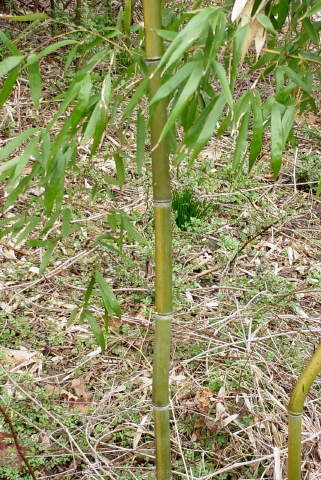
|
||
|
Two species of bamboo which grew near the tennis courts below Colesville until early 2006.
The shorter one with a beige stem, or culm, is brake cane. The green culm is that of yellow groove bamboo. 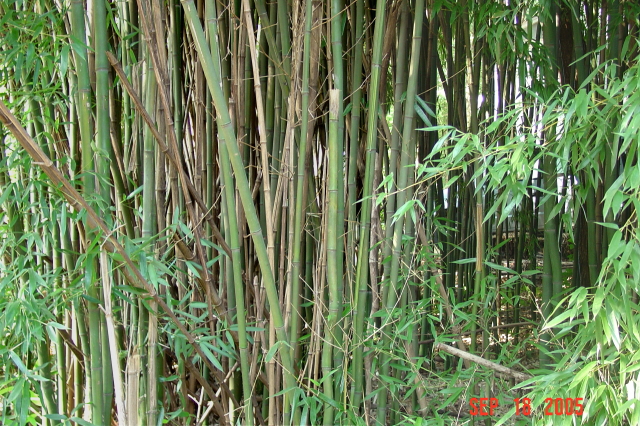
|
|||
|
Slightly different leaves on the two bamoboo species. Brake is on the left.

|
|||
|
Lower culms of yellow-groove bamboo are typically bent.

|
Leaves on brake. Brake is found naturally in Virginia and southward.

|
||
|
Until 2005 the largest stand of bamboo in Sligo stood between Flower Avenue and New Hampshire. A Vietnam soldier reportedly came to value bamboo abroad and planted some here when he settled. It eventually spread across three or four back yards, and when one approached from a certain vantage the landscape reminded one of the mountains in Chinese paintings. The bamboo raised a question mark among those who valued it - was there an alternative to its removal, such as building an underground root barrier? Two owners decided to cut the bamboo down to the stream. The dead canes were left to rot rather than being used as wood. A small green stand remains (left).
|
|||
|
A small stand of bamboo stood several years at the playground near the Parkside bridge, above Colesville. Fifty yards away was a second stand, and a third jumped over the nearby tributary. In the foreground is the cut trunk of a tremendous sycamore that fell after torrential rains.
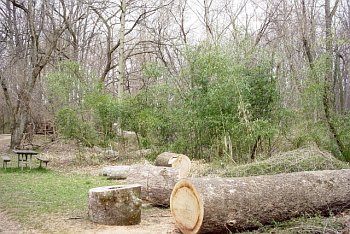
|
Cub Scouts who still had energy after a litter pick-up helped remove canes of bamboo under the direction of steward Ross Campbell, center.
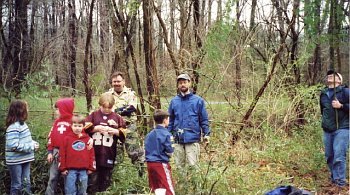
|
||
|
Not surprisingly some bamboo reappeared, in a straight line, indicating an underground runner. Repeated cutting will kill bamboo.
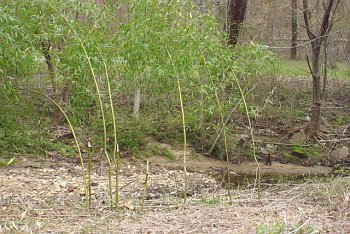
|
These bamboo stalks were cut by some Parkside employees from the slope next to Dallas. The canes were saved by one worker for possibly making a bamboo fence. The employees occasionally removed invasives at lunch for a time.
Bamboo canes need to dry slowly in cool, dry air, as perhaps in a garage. If they dry too quickly, inner wood separates from outer, and splitting occurs. 
|
||
|
Barberry Berberis thurbergii, Barberry family
Barberry occasionally escapes from gardens and is slightly invasive. It has distinctive spatula-like leaves, and elongated red berries. These had not fallen by April. 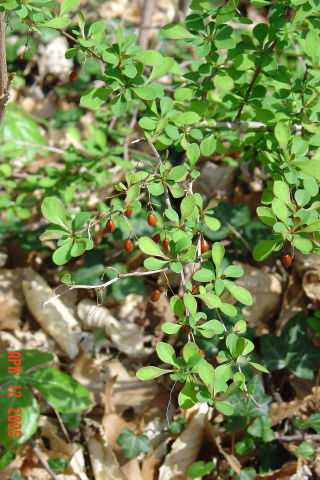
|
The barberry bark is unexpectedly bright yellow inside.
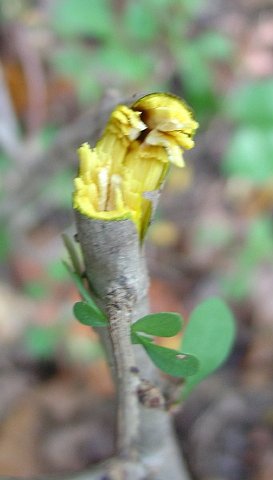
|
||
|
Barberry also has sharp thorns.When the state rebuilt the beltway underpass in about 2002, it replanted with barberry and the native winterberry. The barberry had been approved by the Park in error; it is normally not used.
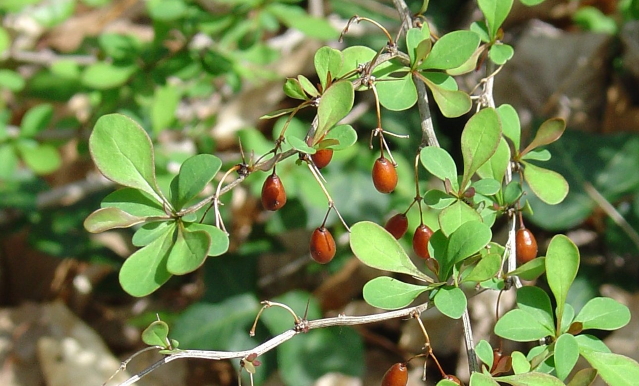
|
|||
|
Japanese Holly, Ilex crenata, Holly family
Japanese holly is an occasional shrub whose dense foliage stands out in winter. It occurs in isolated situations in the woods. 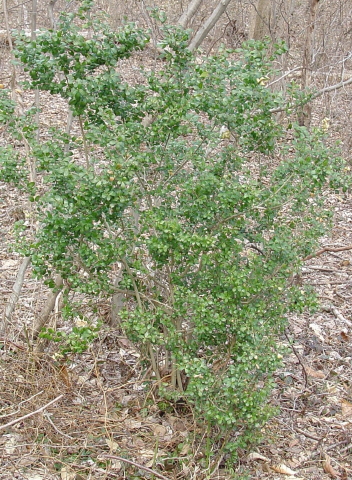
|
The holly leaves curl downward as if pressed over a finger.
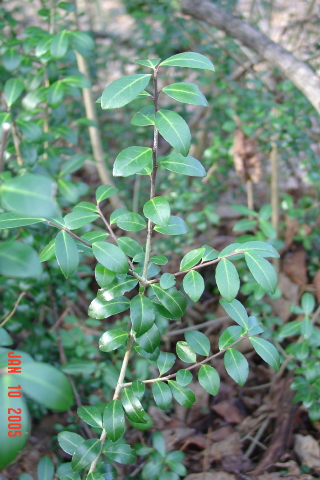
|
||
|
Japanese Knotweed, Fallopia japonica (until recently Polygonum cuspidatum), Smartweed family
Japanese knotweed has magnificent foliage, but it spreads in dense mats that are extremely difficult to remove. This plant was first recognized in Sligo in 2003, when one or two small stands were found in several sections. In 2004 Clair Garman made it a special project to remove the plant from the bridge near Aspen Avenue, below the Carroll Avenue bridge. For photos and a captivating description, see http://www.fosc.org/AL-Knotweed.htm The Park sprayed all known infestations for the first time in September 2005. 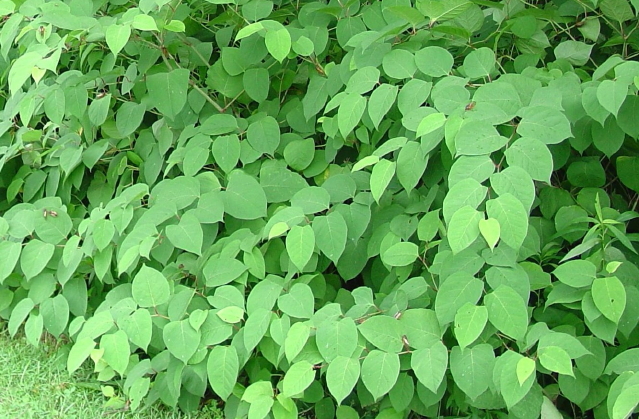
|
|||
|
Knotweed twigs zig-zag slightly, helping with identification.
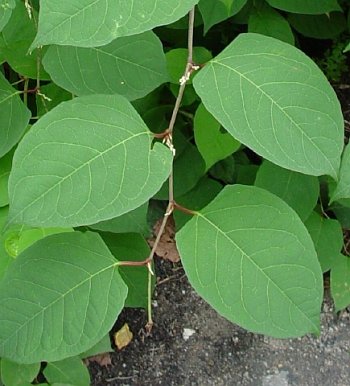
|
New growth of knotweed (large leaves) in early spring.

|
||
|
Knotweed at the Wayne - Long Branch Park on University and Wayne, struggling after being sprayed earlier by the Park. New growth, with white flowers, is pushing beyond the edge into the foreground.
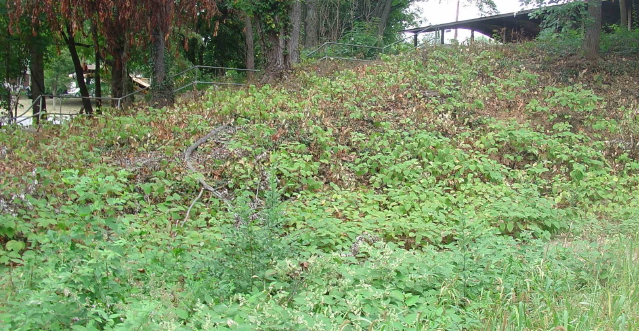
|
|||
|
Knotweed plants in the foreground were cut the previous year, while the taller ones (in back shade) were not. Repeated cutting has so far not eradicated the plant. Other methods that have been tried without success include digging with a shovel (root fragments rebound), spraying cut stems with Vine-X; repeated cutting 3-4 times; and ...

|
... a plastic tarp. This tarp was placed experimentally by Clair Garman on a slope near Aspen Avenue Bridge. After nearly a year roots still shot up from the sides.
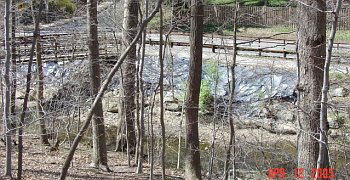
Roots in spring spread from under the tarp.
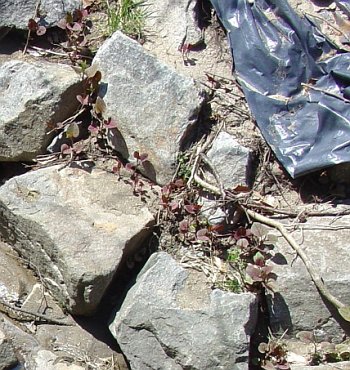
|
||
|
Several yards of Japanese knotweed run along the woods of Sligo Intermediate School near the tennis court. The Public School system outlaws chemical use on school grounds.
This clone on the boundary line of park and school property may get quite large before the two agencies work together to eradicate it. Apparently public pressure will be needed. In another agency case, the State Highway Administration was contacted about knotweed along the edge of the inner Beltway loop, just beyond Sligo Creek Parkway. Following a phone call a highway maintenance person obligingly killed it. Within a few days the knotweed had browned, perhaps with use of a relatively strong chemical. But in the next year, 2005, it returned. 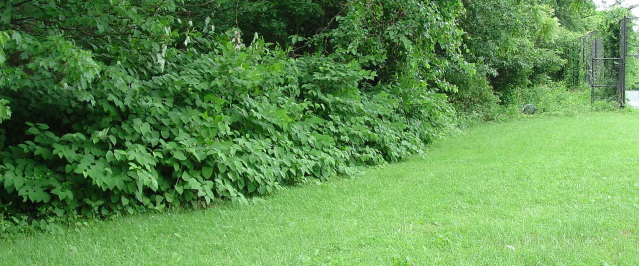
|
|||
|
Autumn Olive, Elaeagnus umbellata, Olive family
Fortunately this shrub is sparse in Sligo. It covers acres of land along Route 95 in Connecticut, together with Japanese knotweed. Autumn olive has distinctive wavy leaves and red berries. Russian Olive, a species found primarily in western US, has yellow berries. 
|
The underleaves are silver-gray. Autumn olive was brought from east Asia in the 1830s and according to one website, used for shelterbelts, reclaimed mine areas, and to increase wildlife habitat.
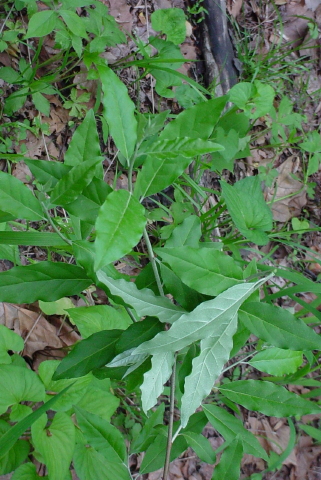
|
||
|
Privet, Ligustrum obtusifolium and California Privet, Ligustrum ovalifolium, Olive family.
At least two species of privet occur in Sligo. In the more common privet on the left, twigs seem almost top-heavy because leaves grow larger at the tip.
|
|||
|
A few of last year's leaves always seem to cling through winter. Common privet has opposite stems, frequent twigs of only one or two inches growing from the trunk, and pale whitish-gray bark. Small shrubs are easy to uproot in wet ground.
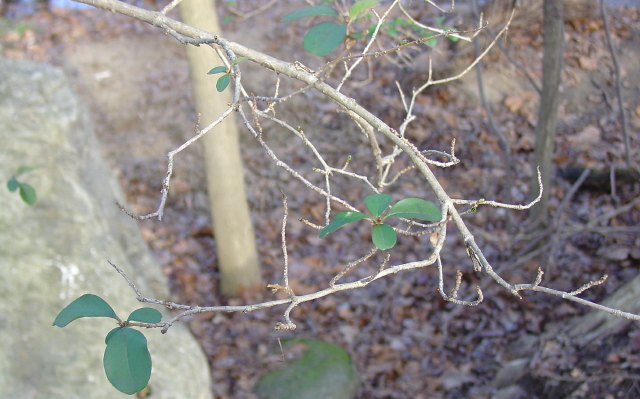
|
|||
|
The berries of privet resemble tiny black olives attached by a short stalk. Privet belongs to the olive family.

|
|||
|
California privet, uncommon in Sligo, has glossy leaves similar to Camellia. Notice that where one plant has opposite leaves, the other has alternate leaves.
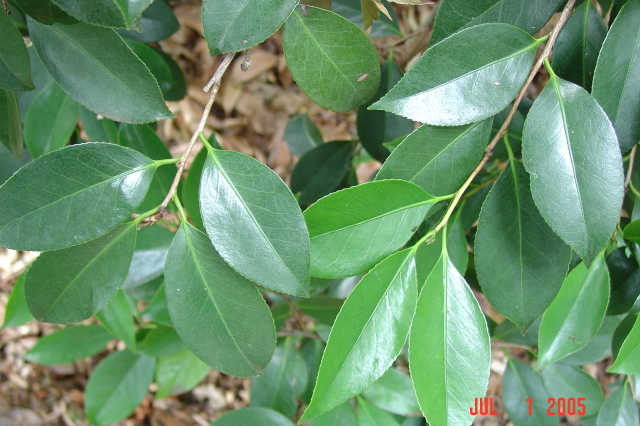
|
|||
|
Rose of Sharon, Hibiscus syriacus , Mallow family
Rose of Sharon occurs here and there in the Park, but rarely in clusters. The flowers are purple-pink or pink and white, and resemble a the related garden hollyhock. An insect wandered at the base of the petals. 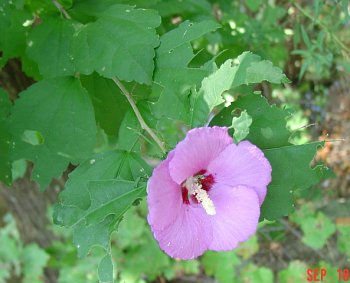
|
Rose of Sharon seed cases, about a half inch wide, are distinctive in winter.

|
||
|
"Crown of Thorns"
Some of the world's 400,000 plants seem to be from another planet. This mystery plant in the woods above Colesville is the only one known in the Park. Its stems are green and flattened, and thorny. May it remain many years. 
|
|||